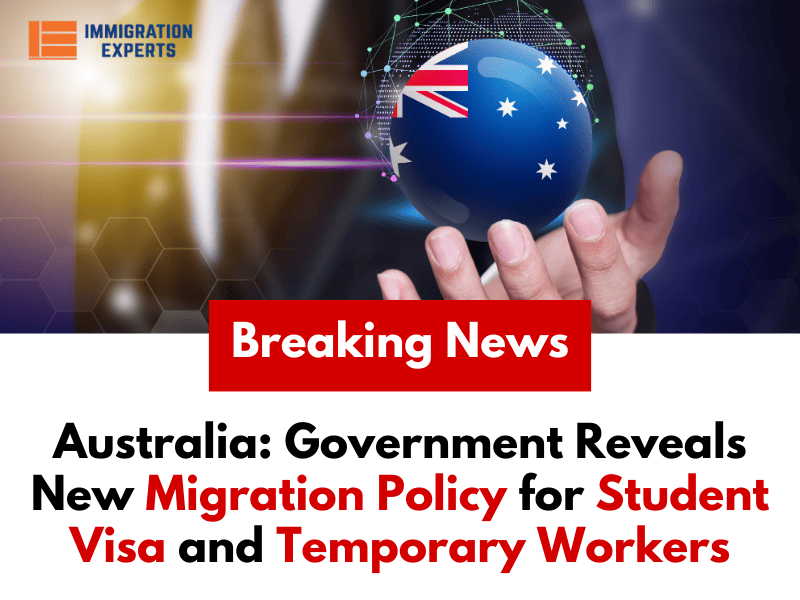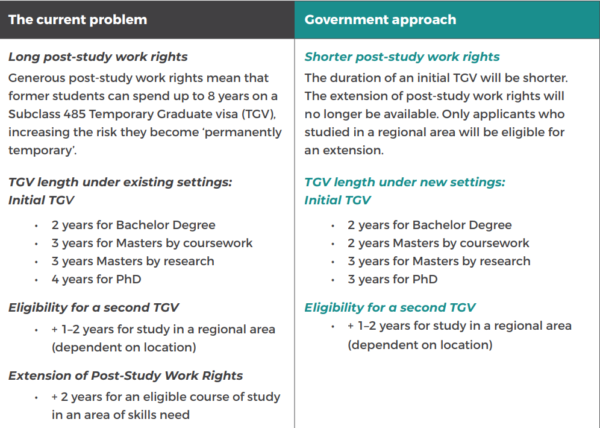051 8439995, 042 35911332

The government of Australia recently introduced a new migration policy for international students and skilled workers who want to come to the country. Home Affairs Minister Clare O’Neil shared this information, stating that these changes will be implemented over the next two years. The goal of these reforms is to fix issues in the migration system and create a more inclusive experience for people coming to Australia. The focus is on shaping the future of the country through a comprehensive approach to migration.
Things You Will Find In This Page [hide]
Australia Strengthens Migration Policy with Higher English Proficiency Standards
Australia has updated its policies for the Student Visa, specifically focusing on English proficiency requirements. The Department of Home Affairs (DHA) has implemented new guidelines, necessitating higher scores in English proficiency tests for foreign students. The scrutiny on second visa applications for extensions will also be more stringent.
The English proficiency requirement for Graduate visa applicants has been increased. Previously, applicants needed a score of 6.0 in the International English Language Testing System (IELTS). Now, the requirement has been raised to 6.5. Similarly, for Student visa applicants, the requirement has been increased from a score of 5.5 to 6.0.
The purpose of these changes is to guarantee a heightened level of English proficiency among students entering Australia on visas. This reflects the government’s dedication to upholding high standards in education quality.
Work Opportunities for Former Students in New Migration Policy
Graduate visas are designed for individuals who have previously held student visas, offering them full work rights. This allows international students to gain valuable work experience in Australia’s job market once they complete their studies. However, a review discovered that a significant number of Temporary Graduate visa holders end up in low-skilled jobs, limiting their chances of qualifying for a skilled permanent visa.

This situation has left around 19,000 students and graduates in Australia for nine years or more, facing obstacles in fully settling and integrating into the labor market due to their prolonged temporary status.
Government’s Strengthen Graduate Visa
The government is adopting reforms from the Migration Review to strengthen graduate visas. The goal is to align graduates with jobs matching their skills, address skill shortages, and prevent prolonged ‘permanently temporary’ status. Adjustments in post-study work rights aim to offer graduates sufficient time to showcase skills and set boundaries for those with low chances of permanent residency.
Graduates in skilled jobs can apply for the new Skills in Demand visa or a permanent skilled visa without a two-year extension solely based on their qualifications. These changes align Australia’s policies with other countries and international trade agreements.
The government is streamlining graduate visas, speeding up the transition from student to graduate visas. Strengthening the pathway from graduate to temporary skilled visas provides employers certainty about a graduate’s work rights and pathways to permanent residence. These changes aim to decrease migration levels, especially for graduates with fewer prospects of permanent residence.
Key Changes in Graduate Visa Under Australia’s New Migration Policy
Here are some changes to the graduate visa:

Australia Introduced New “Skills In-Demand Visa”
The Australian government has revealed plans to introduce a new visa called the Skills in Demand Visa, which will replace the existing Temporary Skill Shortage Visa. This new visa aims to provide workers with more flexibility to change employers and establish clear pathways to permanent residency for those who aspire to it.
Who is Eligible for a Skills In-Demand Visa?
The Skills in Demand Visa will be valid for four years and will have three distinct pathways based on skill levels. These pathways are:
1. The first pathway is designed for individuals with specialist skills, particularly in sectors like technology and energy. To be eligible for this pathway, applicants must earn a minimum of $135,000 in any occupation, excluding trade workers, machinery operators, drivers, and laborers.
2. The second pathway focuses on core skills essential to meet workforce demands. It will have a “simpler” and regularly updated occupation list that will evolve to align with Australia’s job market dynamics.
3. The third pathway, still in development, will target essential skills and address labor shortages, especially for individuals with lower incomes. The Australian government anticipates that these new pathways will contribute $3.4 billion to the budget over the next decade. This initiative reflects the government’s commitment to addressing the evolving needs of the workforce and boosting the country’s economic outlook.
